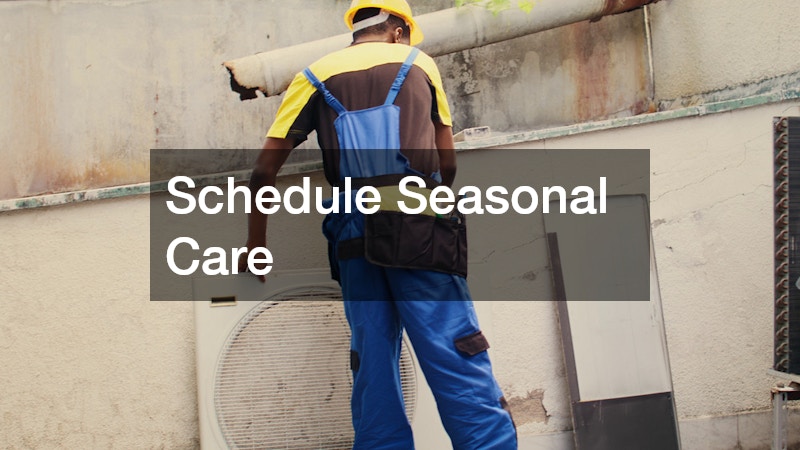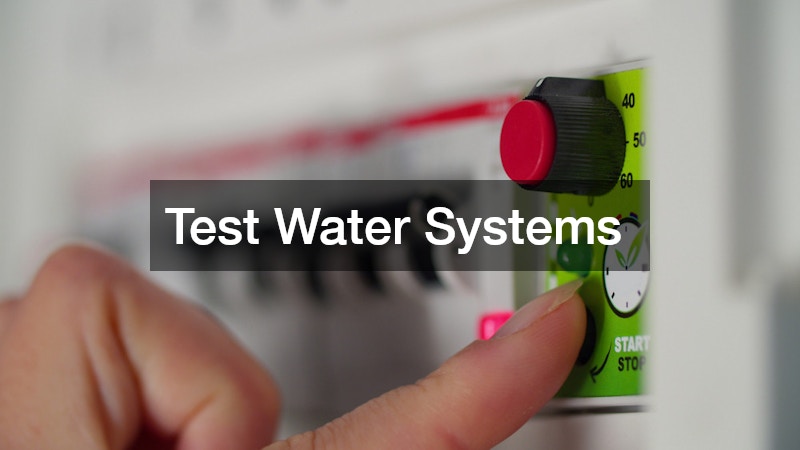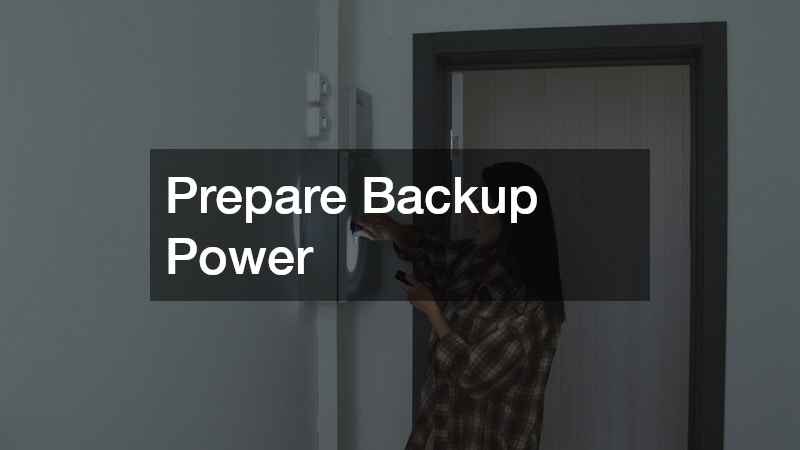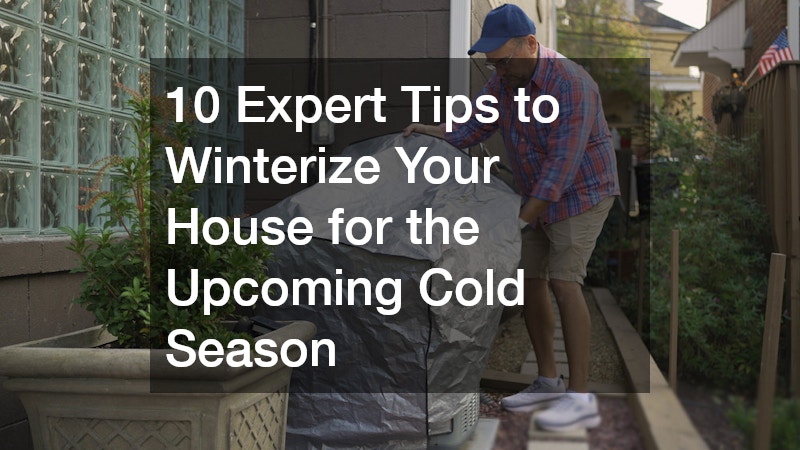As the colder months approach, homeowners begin to think about ways to prepare their spaces for lower temperatures, icy conditions, and unpredictable weather patterns. Taking the time to winterize your house can make the season not only more comfortable but also far more cost-effective. By investing in preventative measures and thoughtful maintenance, you can avoid emergencies and create a living environment that is warm, safe, and reliable throughout the season. It is not simply about turning up the thermostat; it is about carefully checking all the systems and structures that make your home run smoothly.
The idea of preparation goes beyond basic comfort. Cold weather can expose hidden vulnerabilities in a home, such as weak roofing, blocked chimneys, or outdated wiring. When these issues are ignored, they can quickly escalate into expensive repairs. Creating a plan to address each area of your home ensures that nothing is overlooked and that you have peace of mind when storms or cold snaps roll in. Preparing now also reduces stress later, since you will not have to scramble when a problem arises during a freezing night or unexpected snowstorm.
This guide provides ten expert tips that cover the most critical areas of home maintenance for the cold season. From heating systems to water supply lines and from power backup to outdoor preparation, each section highlights what to look for and what steps to take. These recommendations are designed to be practical, actionable, and easy to follow. Whether you are an experienced homeowner or preparing for your first winter in a new space, these tips will help ensure your house remains secure and efficient until warmer weather returns.
1. Check Heating Systems

A reliable heating system is the foundation of comfort during cold months, and ensuring that it is running properly is a key first step. If left unchecked, even minor inefficiencies can result in higher energy costs and uncomfortable indoor conditions. Homeowners who schedule inspections in advance tend to save more money over the season and deal with fewer breakdowns. It is especially important to focus on system performance before the first deep freeze sets in, since that is when demand is highest.
Professionals trained in HVAC maintenance can conduct detailed checks to identify issues that homeowners might overlook. From measuring airflow to assessing overall efficiency, they make sure every component is functioning as intended. They can also detect worn parts or dirty coils that could reduce output, offering timely repairs before these issues become emergencies. This detailed assessment is invaluable when you want to winterize your house effectively.
Beyond immediate inspections, long-term care for heating systems involves scheduling annual maintenance, replacing outdated equipment, and learning how to adjust settings for maximum energy efficiency. With consistent care, you can extend the lifespan of the system and reduce both repair bills and energy use. By taking these steps, homeowners can feel confident that their heating system will deliver dependable performance when it matters most.
2. Inspect Air Filters
Air filters are often overlooked, yet they play an important role in maintaining the efficiency of a home’s heating system. When filters are clogged, airflow is restricted, causing systems to work harder and reducing indoor air quality. This can result in uneven heating, higher costs, and even safety risks if a system overheats or breaks down. Clean filters also help reduce dust and allergens, making the living environment healthier during the time when windows are often sealed shut.
Regular replacement of air filters is a simple yet highly effective part of furnace repair. Most filters should be changed every few months, but in homes with pets or high levels of dust, more frequent replacements may be necessary. Taking this small step ensures that airflow remains consistent and helps avoid larger, more expensive repairs. It is a preventative measure that is easy to overlook but critical when you need to winterize your house properly.
In addition to replacing filters, homeowners should consider investing in higher-quality products designed to capture finer particles. Modern filters can dramatically improve air quality while keeping systems running efficiently. By adding this step into your seasonal checklist, you not only extend the life of your system but also enhance the comfort and safety of your home throughout the cold months.
3. Schedule Seasonal Care

Professional support from heating contractors can be a game-changer when preparing for winter. While some homeowners handle basic maintenance themselves, experts bring advanced tools and knowledge that ensure a system is prepared for heavy seasonal use. A professional inspection not only boosts performance but also gives you peace of mind that nothing is being overlooked.
Heating contractors are trained to identify both common and rare problems that may arise in complex systems. They can calibrate thermostats, check for leaks, and even recommend upgrades that could improve energy efficiency. By working with a reliable contractor, you can better winterize your house and make sure everything is prepared for the long months ahead.
Beyond immediate fixes, contractors often provide guidance on long-term energy planning. Whether that means considering alternative heating sources, improving insulation, or upgrading to energy-efficient systems, their expertise helps homeowners save money in the future. By scheduling regular care, you make your home stronger against the challenges of the cold season.
4. Service Chimneys
Fireplaces add charm and warmth, but they must be properly maintained to ensure safety. Over time, creosote and soot build up inside chimneys, which can create fire hazards if not addressed. Preparing these systems before the season begins helps prevent dangerous situations and improves efficiency when you rely on your fireplace during chilly nights.
Professional fireplace services handle more than just cleaning. They inspect flues, dampers, and structural elements of the chimney, ensuring everything works as it should. Regular maintenance not only prevents fire risks but also makes heating through a fireplace more efficient. This level of care is vital when you want to winterize your house and keep every source of heat reliable.
Fireplace care also enhances the overall enjoyment of your home during the colder months. When you know your system is safe and functional, you can use it without concern, creating cozy nights with family and friends. Proper attention to this detail ensures that your fireplace is not just a decorative feature but a practical and secure part of your heating strategy.
5. Test Water Systems

Water systems often face the brunt of cold weather, making it crucial to check for potential problems before temperatures dip. Frozen pipes or malfunctioning heaters can create unexpected stress and costly damage. Properly preparing your home’s water system will prevent disruptions and help keep your family comfortable.
One critical task is scheduling hot water heater service. Having a professional inspect your unit ensures that it is clean, functional, and ready for heavier use during colder months. Technicians can also flush the tank, check safety valves, and evaluate whether it may be time for a replacement. This preventative care helps winterize your house by making sure the water supply is consistent and safe.
Homeowners can further protect their plumbing by insulating exposed pipes and sealing any drafts that might allow cold air inside. Taking these steps in combination with professional servicing ensures that your system runs efficiently. Being proactive saves money, prevents emergencies, and makes daily routines smoother when the weather outside is less forgiving.
6. Review Electrical Needs
Electrical demands rise during colder months as families use more lights, appliances, and heating systems. A safe and efficient electrical system ensures your home can handle the increased load. Ignoring this area could result in outages, damaged equipment, or even safety hazards that are costly to repair.
Calling in professional electric services provides peace of mind that your system can handle seasonal needs. Experts can assess your wiring, check outlets, and recommend upgrades where necessary. This evaluation is particularly important when you want to winterize your house because older systems may not support modern energy demands safely.
Beyond inspections, homeowners should also consider installing surge protection and updating outdated fixtures. These steps safeguard valuable electronics and improve efficiency. By giving attention to your electrical system before winter arrives, you create a safer and more reliable home environment for the season.
7. Prepare Backup Power

Winter storms often cause power outages, leaving households vulnerable during freezing conditions. Having a backup plan ensures you can maintain warmth, food storage, and lighting even when the grid goes down. Preparedness is about peace of mind as much as it is about comfort.
One reliable option is investing in generators. Whether portable or standby, they provide a dependable source of electricity when primary systems fail. Regular maintenance, proper installation, and fuel storage are all essential steps for ensuring they will function when needed. A dependable backup plan helps you winterize your house with confidence.
In addition to installation, homeowners should test their backup power solutions regularly. Running short practice sessions makes sure everything operates correctly. These small efforts reduce stress and allow families to focus on staying safe and warm when outages occur.
8. Examine Roof & Gutters
Your roof is one of the first lines of defense against winter weather, making inspection an essential part of seasonal preparation. Heavy snow, ice, and wind can worsen existing issues, leading to leaks and structural damage. A thorough review helps prevent these costly problems.
Hiring a trusted roofing company ensures that shingles, flashing, and gutters are all checked for wear and tear. They can identify small issues before they escalate and recommend the best solutions to protect your home. Addressing these concerns now is one of the most effective ways to winterize your house.
Beyond inspections, proper gutter cleaning ensures that melting snow and rain can flow freely away from the home. Without this, water may back up and cause damage to siding or foundations. Taking these steps strengthens your home against harsh conditions and avoids costly repairs.
9. Trim Outdoor Growth
Trees and overhanging branches can pose a serious hazard during winter storms. Heavy snow and ice can cause limbs to snap, putting your property and safety at risk. Proactively addressing outdoor growth reduces these dangers significantly.
Professional tree services provide expertise in identifying weakened or overgrown branches. They can trim, remove, or treat growth as needed to protect your home. This care is especially important when you winterize your house because one falling branch can cause extensive roof or vehicle damage.
In addition to safety, trimming also improves the health and longevity of your trees. With stronger growth in the spring, your yard will benefit visually and structurally. This step not only prepares your property for winter but also enhances its long-term value.
10. Call in Expert Help
Plumbing systems are highly vulnerable to freezing, making professional support critical. Cracked pipes or leaks can quickly escalate into major repairs that are both stressful and costly. A little attention now can save a great deal of trouble later.
Plumbers are trained to spot vulnerabilities you might not notice. They can insulate lines, test pressure, and ensure your system is working properly. This expertise is vital when you want to winterize your house and avoid dealing with emergency calls on the coldest days of the year.
Homeowners can add extra protection by draining outdoor spigots, insulating pipes, and keeping indoor temperatures stable. Combining professional help with preventative steps keeps your plumbing secure. By making this a priority, you safeguard both your home and your peace of mind.
The cold season is full of challenges, but with careful preparation, you can turn those challenges into opportunities for comfort and security. Knowing how to winterize your house means looking at every system, structure, and element that could be affected by freezing temperatures or stormy weather. From heating and electricity to water and outdoor maintenance, each area plays a role in creating a safe and efficient living environment. By following expert tips, you not only prevent costly repairs but also improve the daily comfort of your household.
This set of ten strategies gives you a roadmap to follow. Checking heating systems, cleaning filters, and scheduling professional care ensures your warmth. Chimney and water system servicing protect safety and reliability, while electrical and backup power readiness keep the essentials running. Roofing, tree care, and plumbing inspections provide layers of defense against weather-related risks. Each area, when addressed with care, contributes to a home that can handle whatever winter throws its way.
Preparation is about more than just getting through a season. It is about building resilience, reducing stress, and making your home a place where you can thrive no matter the conditions outside. Taking the time to winterize your house today creates long-term savings, improved safety, and greater peace of mind. These expert tips show how small steps in each area combine into a strong, comprehensive approach. By following them, you ensure that your home remains a secure and welcoming refuge until spring arrives.
